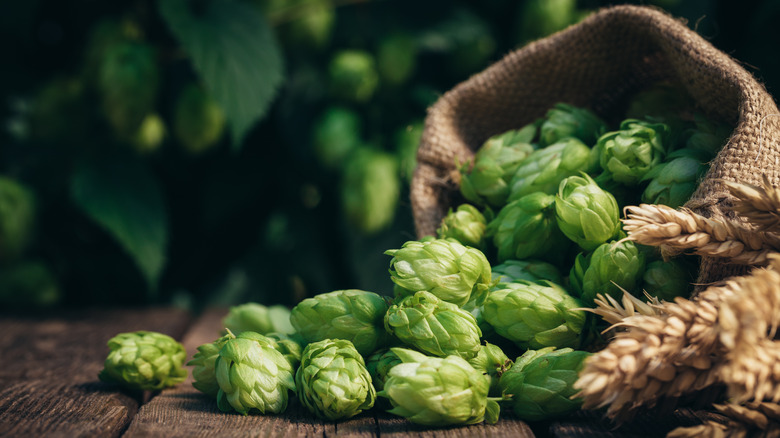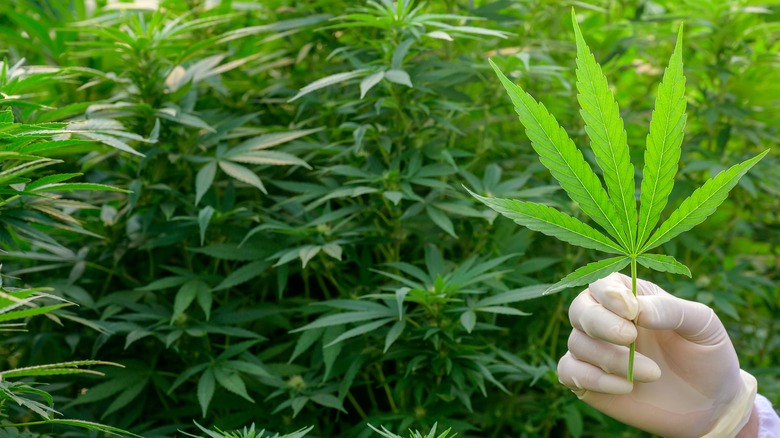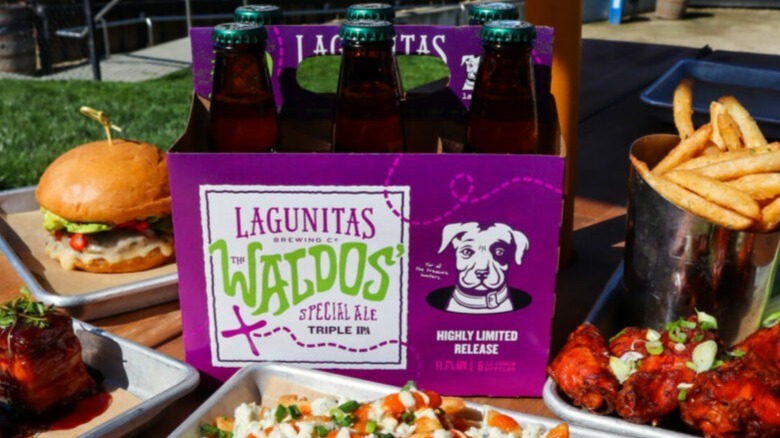Beer And Cannabis Are More Closely Related Than You'd Think
We know our ancestors have been sipping on frothy mugs of perfectly poured beer for vast portions of human history. Still, bold innovation in the world of brewing is a relatively recent phenomenon. Despite being a new player on the beverage scene, craft beer is exploding across the country. Not that long ago, few people could've told you what IPA actually means, but in 2022, North American sales of craft beer totaled over $45 million, and the market for small-batch brews is expected to exceed $121 million over the next few years.
Similarly, another intoxicating item is quickly gaining national popularity. As more and more states hop on the cannabis legalization bandwagon, the rates at which people partake in the recreational drug have steadily increased. The marijuana industry is incredibly lucrative, bringing in $13.2 billion last year. Given the massive and rapidly expanding scopes of the craft beer and cannabis industries, overlap between the two was inevitable. The next time you're at your local brewery, don't be surprised if your IPA starts to taste more hempy than hoppy.
Beer and cannabis share a compound in common
When examining the history of our planet, you'll find that countless different plants and animals can be traced back to a handful of common ancestors. Dogs, cats, and other meat-eating mammals evolved from the Miacis, a small weasel-like critter that roamed ancient earth.
If you were to go back 25 million years, IPAs would be noticeably absent. You would, however, be able to find cannabis. Hops actually branched off from the evolutionary tree of cannabis. Parched from the scorching sun of ancient earth, hops began to move toward water sources, finding the wet soil alongside creeks preferable to the dry savannahs. Having already cemented itself in the savannahs, cannabis stayed put, which resulted in speciation.
For decades of taxonomic classification, beer and cannabis were incorrectly wedged into the Urticales order. Further investigation into their chemical makeup revealed that they are more accurately categorized as of the Rosales order. The early 2000s saw the two plants assigned a new family name, Cannabaceae.
Craft brewers celebrate the shared history of hops and hemp
The genetic connection between hops and cannabis is expressed in their shared flavor profiles. The aromatic, bitter notes found in both a batch of beer and a harvest of hemp result from terpenes, a naturally occurring plant compound.
Inspired by the two plants shared terpene taste, craft brewers around the country have created hop-forward beers with flavors reminiscent of cannabis. Craft beer titan New Belgium offers the Hemperor HPA, which despite having no actual cannabis in its recipe, still gives the overwhelming taste sensation associated with smoking hemp to those who drink it. Lagunitas Brewing Company has The Waldos' Special Ale, a 12% ABV triple IPA named in reference to the Waldos, a group of friends who went on a marijuana-fueled treasure hunt at 4:20, thus inspiring the number often linked to cannabis consumption. Washington D.C. breweries DC Brau and Oskar Blues launched the Smell Like Freedom IPA, a bitter brew with an overwhelming cannabis scent. Only the most aromatic hop strains, like Galaxy and Apollo, will have a powerful enough flavor to mimic marijuana.
Because hops and cannabis are closely related, it's possible that a beer could develop the pungent smell of cannabis without actually having been prepared with strong hops.


